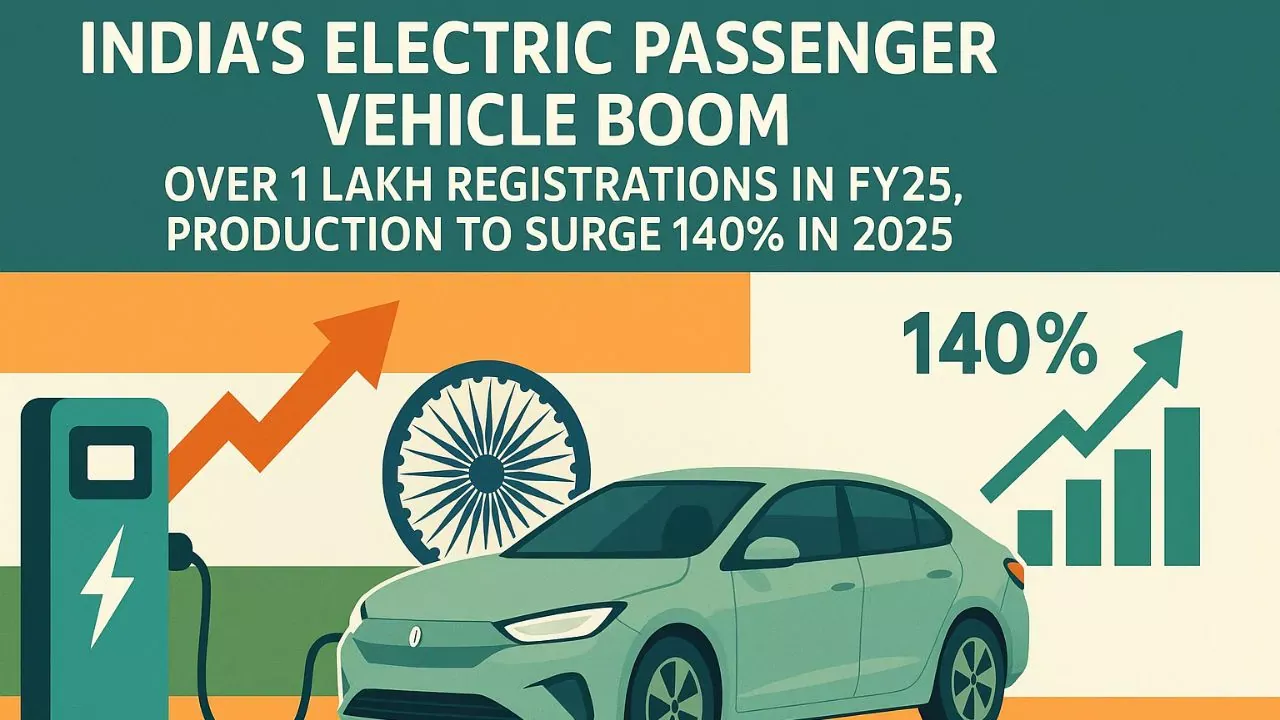New Delhi, April 23, 2025 – India’s electric vehicle (EV) revolution is gaining momentum, with electric passenger vehicle registrations crossing the 1 lakh mark in FY25, reflecting an impressive 18% growth year-on-year. Adding to the excitement, production of battery-powered passenger vehicles is set to skyrocket by 140.2% in 2025, reaching 301,400 units, signaling a transformative shift in India’s automotive landscape.
Key Milestones in FY25
The surge in electric passenger vehicle registrations highlights growing consumer confidence in EVs:
- Over 1 lakh units registered in FY25, a significant leap from previous years.
- 18% year-on-year growth, driven by rising demand for electric cars and SUVs.
- Popular models from Tata Motors, Mahindra & Mahindra, and MG Motor continue to dominate, with new entrants like Tesla preparing to join the market.
This milestone underscores India’s progress toward its 30% EV penetration target by 2030, despite the current national EV penetration rate of 7.8% in FY25.
Production Surge in 2025
The projected 140.2% increase in EV passenger vehicle production to 301,400 units in 2025 reflects robust industry optimism:
- Domestic manufacturing is scaling up, with companies like Tata Motors and Mahindra investing heavily in EV production facilities.
- Battery manufacturing advancements, led by Reliance Industries and Exide Industries, are reducing costs and boosting local supply chains.
- Government policies, such as the FAME scheme and reduced GST on EVs, are encouraging automakers to ramp up production.
This production boom is expected to make electric passenger vehicles more affordable and accessible, further driving adoption.
Why This Matters?
The growth in electric passenger vehicle registrations and production is a critical step toward sustainable mobility in India:
- Environmental Impact: Increased EV adoption reduces carbon emissions and combats air pollution in urban centers like Delhi and Mumbai.
- Economic Opportunities: The EV boom is creating jobs in manufacturing, battery production, and charging infrastructure development.
- Consumer Benefits: With more models hitting the market, buyers can choose from a wider range of electric cars, from budget-friendly options to premium SUVs.
Challenges to Overcome
Despite the progress, hurdles remain:
- Charging Infrastructure: India needs more charging stations to address range anxiety, with states like Karnataka and Delhi leading the way.
- High Costs: Battery replacement costs and limited subsidies for passenger EVs pose barriers for middle-class buyers.
- Policy Gaps: The exclusion of passenger EVs from certain subsidy schemes could slow adoption.
The Road Ahead
India’s electric passenger vehicle sector is on an upward trajectory, fueled by consumer demand, industry innovation, and government support. With Tesla testing its Model Y Juniper in India and global players like VinFast investing in the market, competition is set to intensify. Local giants like Tata Motors and Mahindra are also launching new EV models, ensuring a vibrant market in 2025.
As production scales to 301,400 units next year, India is poised to become a global EV hub. Stakeholders must focus on expanding charging networks, reducing costs, and raising awareness to sustain this momentum.
Share this story to celebrate India’s electric vehicle surge! Let’s drive toward a greener future together.

